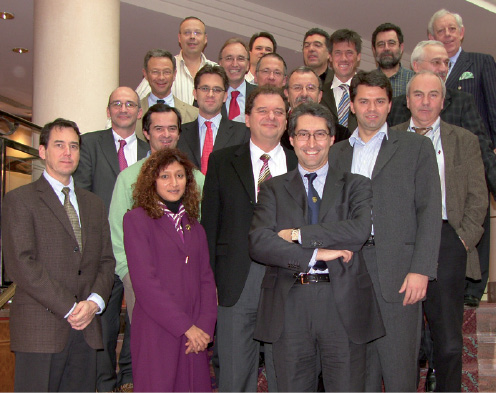As a reader of EuroIntervention Journal, percutaneous cardiovascular intervention must be your primary interest. If so, please take a few moments to read the following update news from your association, the European Association for Percutaneous Cardiovascular Interventions, known as the EAPCI.
EAPCI was formally launched at the World Congress 2006 in Barcelona as a registered branch of the European Society of cardiology. We share the ESC mission, albeit focused on our field of activity:
“To reduce the burden of cardiovascular disease in Europe
through Percutaneous Cardiovascular Interventions”
and the KEYWORDS that govern our action are:
Synergy
Focus
and Credibility.
Even though so recently born, EAPCI is already able to offer you important assets, represented by the heritage of its proud parents (EuroPCR and Working Group 10):
– EuroPCR Course, to take place this year for the first time in Barcelona, on the 22nd-25th May 2007,
– EuroPCRonline.com, featuring outstanding educational content, and the EAPCI website accessible on ESCardio.org,
– Euro Heart Survey and Registry,
– A comprehensive Education-Training-Accreditation programme,
– and not to forget, EuroIntervention Journal itself.
For EAPCI, strengths and opportunities are many. The coalition formed by the EuroPCR team – representing nearly two decades of commitment to education and teaching – along with the European Society of Cardiology – “the” representative cardiovascular medical scientific society in Europe and beyond – is a unique model. The blend of both cultures will materialise strong synergies as we consolidate our current assets and explore new activities.
At a moment where our field is experiencing another wave of expansion, leadership will be needed more than ever. To this end, EAPCI will rely entirely on a close collaboration with the national Working Groups, Societies or other bodies representing interventional communities throughout Europe, as the building blocks of our action. EAPCI can only be successful when governed by a “bottom up” relationship with its constituency.
At the beginning of the three-year term of this Board, many new initiatives are being considered, but at this present time please consider what we already have up and running right now. EAPCI leadership is structured in 8 Committees, each having a well defined mission that will be further delineated on our website and future newsletters: Communication, Euro Heart Survey, Scientific Initiatives, National Membership, Education, Fellowship, Accreditation and Clinical Initiatives. Through your national representatives, you will be asked to join and engage in these various committees, making EAPCI an essential component of your professional life in the years to come.

EAPCI Board 2006-2009.
Rows from left to right and from bottom to top,
– Marc van Sambeek, Keren Deront (EAPCI Office at ESC), Carlo Di Mario (President-Elect),
– Antoine Lafont, Sigmund Silber, Darius Dudek (Secretary),
– Martyn Thomas, Andreas Baumbach, Jean Marco, Jan-Erik Nordrehaug,
– Alberto Cremonesi, Franz Eberli, Horst Sievert (Treasurer), Franz Weidinger, William Wijns (President),
– Bernard Chevalier, Ran Kornowski, Jean Fajadet, Alec Vahanian, Alan Howard (CEO ESC).
Missing on the picture are Sally Vincent (EuroPCR office), Marc Doncieux (CEO Europa) and Patrick Serruys.

